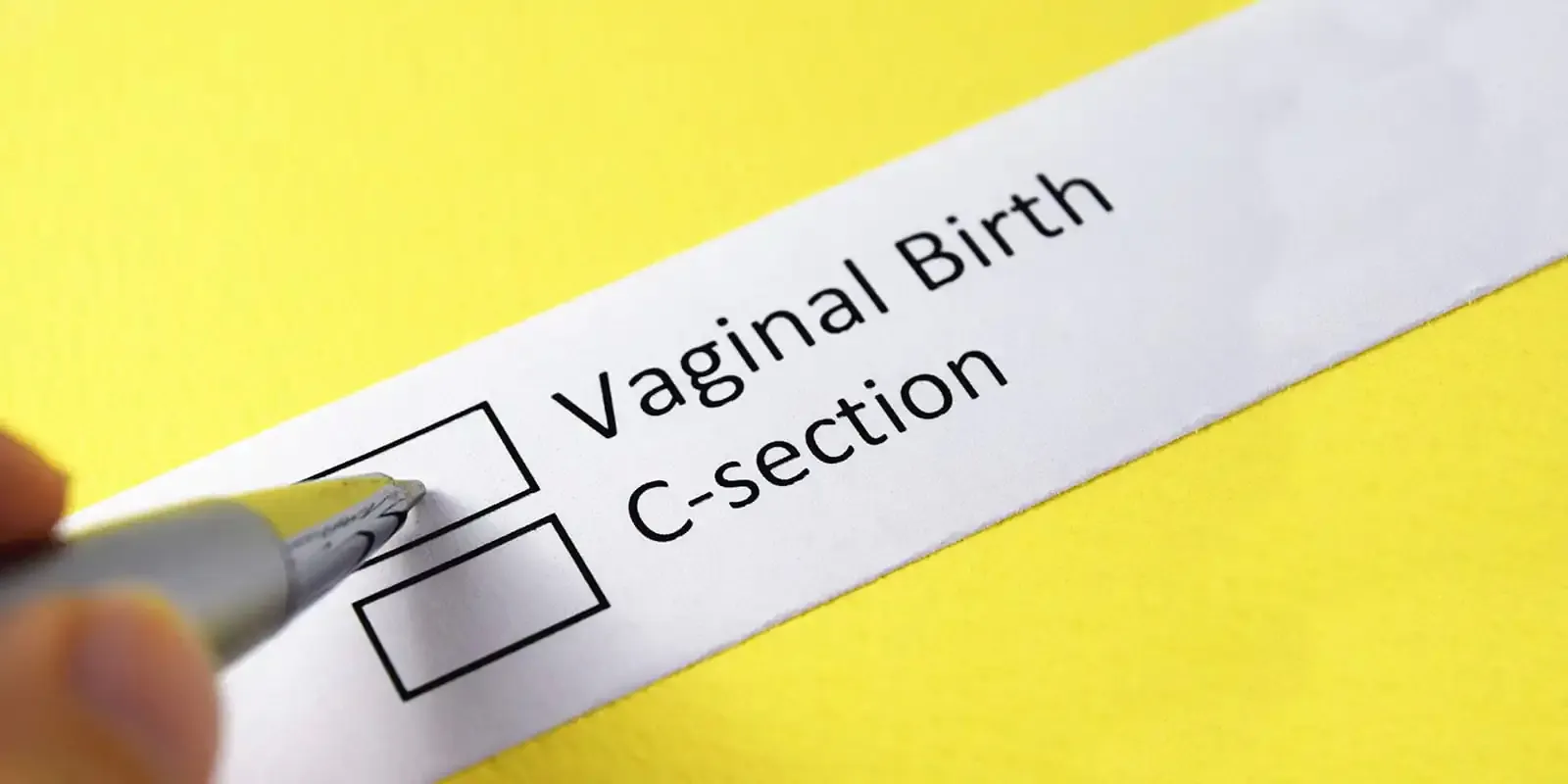Με τον όρο VBAC (Vaginal Birth after Cesarean) αναφερόμαστε στον φυσιολογικό κολπικό τοκετό που μπορεί να γίνει, αφού μια γυναίκα έχει γεννήσει το μωρό της σε προηγούμενη εγκυμοσύνη με καισαρική τομή. Παλαιότερα οι γυναίκες ήξεραν ότι αν έχουν γεννήσει με καισαρική τομή, τότε ο επόμενος ή οι επόμενοι τοκετοί θα έπρεπε αποκλειστικά να γίνουν επίσης με καισαρική.
Πολλές γυναίκες, έχουν υποβληθεί σε καισαρική τομή χωρίς να έχουν κατανοήσει πλήρως τον λόγο ή επειδή δεν είχαν προηγουμένως αναγνωρίσει την αξία του να έχουν έναν φυσιολογικό τοκετό, και αυτό μπορεί να είναι μια τραυματική εμπειρία. Αυτές οι μητέρες μπορεί να αισθάνονται ότι στερήθηκαν την ευκαιρία να βιώσουν έναν φυσιολογικό τοκετό και μπορεί να νιώθουν ένα αίσθημα απώλειας και απογοήτευσης.
Ένας τρόπος για αυτές τις μητέρες να διεκδικήσουν εκ νέου την εμπειρία του τοκετού τους και να έχουν μια πιο θετική και ενδυναμωτική εμπειρία, είναι με την προσπάθεια ενός κολπικού τοκετού μετά από καισαρική τομή.
Εξειδικευμένος στην παρακολούθηση κυήσεων υψηλού κινδύνου (MSc in High-Risk Pregnancy)
Εξασφαλίστε την καλύτερη φροντίδα για εσάς και το μωρό σας. Καλέστε μας σήμερα στο 6974614818 ή κλείστε ραντεβού online.
Δείτε τις πιθανότητες που έχετε για ένα επιτυχημένο VBAC
Ερώτηση 1 από 9
Το παραπάνω αποτέλεσμα είναι μια απλή εκτίμηση και δεν αντικαθιστά την ιατρική συμβουλή.
The term VBAC (Vaginal Birth after Cesarean) refers to the normal vaginal childbirth that can occur after a woman has given birth to her baby by cesarean section in a previous pregnancy. In the past, women knew that if they had given birth by cesarean section, then the next or subsequent births would have to be exclusively by cesarean as well.
Many women have undergone cesarean section without fully understanding the reason, or because they had not previously recognized the value of having a natural childbirth, and this can be a traumatic experience. These mothers may feel that they have been deprived of the opportunity to experience a natural childbirth and may feel a sense of loss and disappointment.
One way for these mothers to reclaim their childbirth experience and have a more positive and empowering experience is by attempting a vaginal birth after a cesarean section.
Are there differences between natural childbirth and VBAC?
VBAC natural childbirth is no different from a normal vaginal childbirth. The gynecologist follows the same procedure, with the only difference being that they are more likely to recommend additional tests both before and during childbirth to monitor the health of the mother and the fetus. Usually, the baby's heart is continuously monitored with a cardiotocograph.
According to statistics, worldwide 60-70% of women with a previous cesarean section and 85-90% of women with a previous natural childbirth and cesarean manage to have a natural childbirth after a cesarean.
Advantages of VBAC
Natural childbirth after a cesarean section has significant advantages over a second or repeated cesarean section. Specifically, the advantages are:
- Fulfilling your desire to experience the unique experience of natural childbirth
- Avoiding another cesarean, with all the disadvantages and risks that it has as a surgical procedure
- Usually less blood loss, fewer chances of infection, and minimal pain after childbirth
- Faster recovery, thus reducing the time of hospitalization in the maternity ward and quicker return to daily activities when natural childbirth has occurred, compared to a woman who has given birth by cesarean
- Easier breastfeeding for the mother
- Increased chances of natural childbirth without complications in future pregnancies
- It is less likely to injure the urinary bladder or intestine when vaginal childbirth occurs
Understanding the Risks of VBAC
Despite the many benefits of VBAC, it is important to understand that there are also risks associated with this type of childbirth.
One of the main risks of VBAC is the possibility of uterine rupture, which occurs when the uterus tears during the contractions of childbirth. This is a serious complication that can lead to an emergency cesarean section and can also be life-threatening for both the mother and the baby. The rate of uterine rupture is approximately 0.5-1% in VBAC, which is generally considered low but still exists. You must therefore answer for yourself whether you want to take this risk.
Another risk of VBAC is the possibility of failure to complete childbirth through the vaginal route. In some cases, childbirth may not progress as expected and for medical reasons, a cesarean section may be required. This can be an emotional and physical challenge for a woman who was hoping to have a vaginal childbirth. How do you feel about the possibility of a failed attempt?
Finally, natural vaginal childbirth after a cesarean may in some cases have a higher risk of bleeding and infection compared to a scheduled cesarean section.

Can All Women Have a VBAC?
The possibility of a natural birth after a cesarean section is not solely dependent on the mother's desire, but also depends on her overall health condition and factors related to the pregnancy.
VBAC is most likely to succeed when:
A vaginal birth has preceded, especially when the last birth was a successful VBAC. A previous vaginal birth is also independently associated with a reduced risk of uterine rupture.
VBAC is not recommended in cases where:
- The pregnancy is multiple (twins, triplets)
- The previous cesarean section was performed within the last 12 months
- The fetus is very large (over 4 kg)
- The previous uterine scar from the cesarean is vertical
- More than 1 cesarean sections have been performed
- There is a history of uterine rupture during a previous birth (the chance of a new rupture is greater than 5%)
- The pregnancy is high-risk
- There is a history of uterine interventions such as for fibroids, as the risk of rupture increases
- Labor does not start on its own and labour induction is needed. This increases the chance of uterine rupture 2-3 times and the chance of a cesarean section 1.5 times
VBAC is absolutely contraindicated in cases where:
- The placenta is previa
How Can We Help You?
If you are considering having a natural birth after a cesarean, it is important to visit us so that we can inform you about the entire process. We will answer all your questions, discuss your expectations, and provide you with the information you need to know. We will take your medical history, discuss any previous cesareans or uterine interventions you may have had, and together we will see what the chances are of you having a successful natural birth.
It is important for women to have access to accurate information and to be able to make informed decisions about their care. We want you to succeed in having a natural birth just as much as you do and believe it is achievable.
Even if the odds are very high, you should know that the VBAC birth plan may ultimately not be feasible and an emergency cesarean section may be needed due to complications or because you changed your mind.
Finally, the most important thing to remember is that if you do not manage to have a vaginal birth, it does not mean you have failed. It means you did everything you could to succeed and that your health and your baby's health remained your absolute priority.
Συχνές Ερωτήσεις (FAQ)
Κατανοώ πόσο σημαντικό είναι για εσάς να νιώθετε ασφαλής και σίγουρη σχετικά με την επιλογή του VBAC. Στις περισσότερες περιπτώσεις, ο VBAC μπορεί να είναι μια ασφαλής επιλογή για γυναίκες που πληρούν συγκεκριμένες προϋποθέσεις και παρακολουθούνται στενά από έμπειρους επαγγελματίες υγείας. Είναι φυσιολογικό να έχετε ανησυχίες, και είναι σημαντικό να συζητήσετε όλες τις επιλογές σας με τον γιατρό σας για να βρείτε την καλύτερη λύση για εσάς και το μωρό σας.
Οι πιθανότητες επιτυχίας του VBAC κυμαίνονται περίπου στο 60-70%, αλλά μπορεί να είναι ακόμα υψηλότερες εάν έχετε ήδη βιώσει έναν φυσιολογικό τοκετό στο παρελθόν ή αν δεν υπάρχουν παράγοντες κινδύνου στην τρέχουσα εγκυμοσύνη σας. Κάθε περίπτωση είναι μοναδική, και ο γιατρός σας μπορεί να σας δώσει μια πιο ακριβή εκτίμηση βασισμένη στο προσωπικό σας ιστορικό.
Η δυνατότητα να επιχειρήσετε VBAC μετά από δύο καισαρικές εξαρτάται από διάφορους παράγοντες, όπως ο τύπος των προηγούμενων τομών και η γενική υγεία σας. Συνήθως, οι ειδικοί συστήνουν να επιχειρηθεί VBAC μετά από μία προηγούμενη καισαρική, αλλά σε ορισμένες περιπτώσεις μπορεί να είναι εφικτό και μετά από δύο. Είναι σημαντικό να συζητήσετε τις επιλογές σας με τον γιατρό σας, ο οποίος θα αξιολογήσει την κατάστασή σας και θα σας καθοδηγήσει ανάλογα.
Σε περίπτωση που προκύψουν επιπλοκές κατά τη διάρκεια του VBAC, όπως η ρήξη της μήτρας ή η αποτυχία του τοκετού, ο γιατρός σας θα πρέπει να προχωρήσει σε άμεση καισαρική τομή για να διασφαλίσει την ασφάλεια σας και του μωρού σας. Είναι φυσιολογικό να νιώθετε ανησυχία γι' αυτό, και η ομάδα υγείας σας θα είναι εκεί για να σας υποστηρίξει και να διαχειριστεί κάθε κατάσταση με τον καλύτερο δυνατό τρόπο.
Η προετοιμασία για ένα VBAC περιλαμβάνει συζήτηση με τον γιατρό σας για τις πιθανότητες και τους κινδύνους, διατήρηση ενός υγιούς βάρους, τακτική παρακολούθηση της εγκυμοσύνης σας και ακολούθηση των οδηγιών του γιατρού για τη διαχείριση της εγκυμοσύνης. Επιπλέον, η ψυχολογική προετοιμασία είναι εξίσου σημαντική. Εξασφαλίστε ότι αισθάνεστε υποστηριζόμενη και ενημερωμένη, ώστε να μπορέσετε να πάρετε μια εμπεριστατωμένη απόφαση που θα σας κάνει να νιώθετε σίγουρη και έτοιμη για αυτή τη σημαντική στιγμή.
Αν έχετε περισσότερες ερωτήσεις ή ανησυχίες σχετικά με τον τοκετό μετά από καισαρική τομή, ΚΑΛΕΣΤΕ ΜΑΣ:
+30 6974614818Πηγές
Ward, A., & Roberts, N. (2021). Vaginal birth after caesarean section. Obstetrics, Gynaecology & Reproductive Medicine.
Norman P. (1995). Vaginal birth after caesarean section. Lancet (London, England), 345(8943), 142. https://doi.org/10.1016/s0140-6736(95)90163-9


